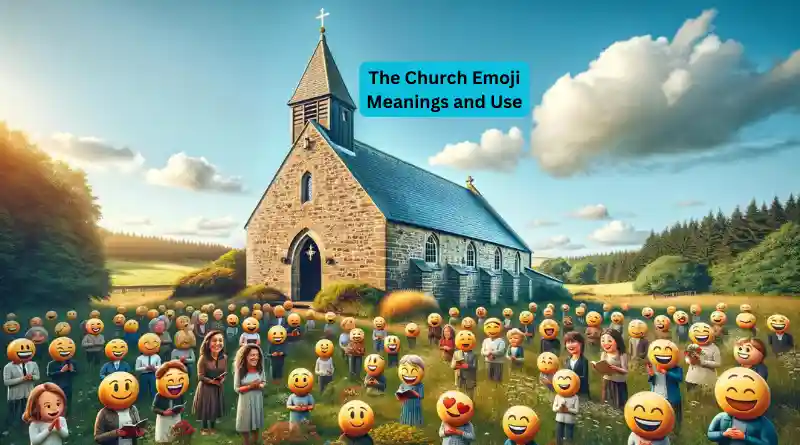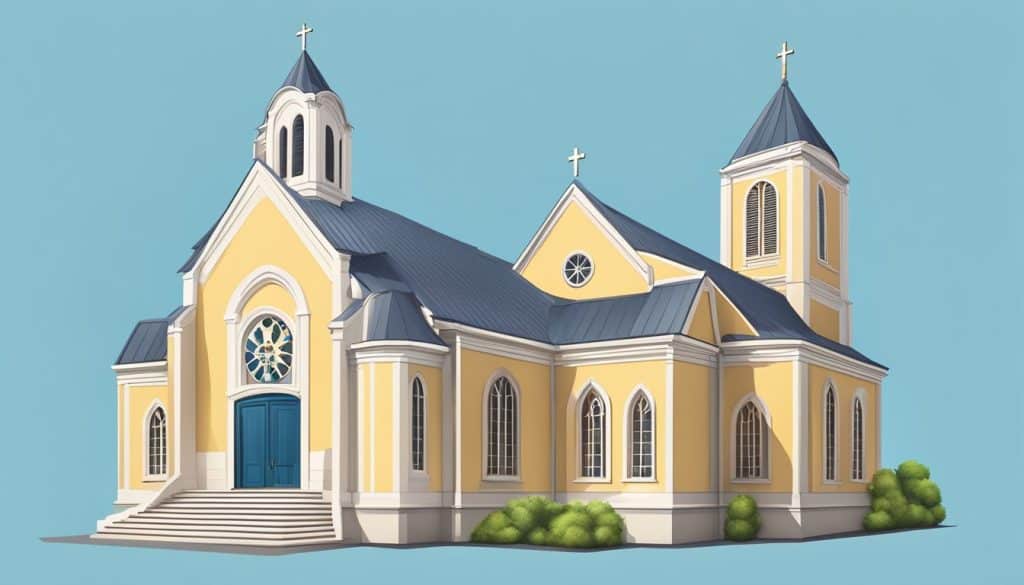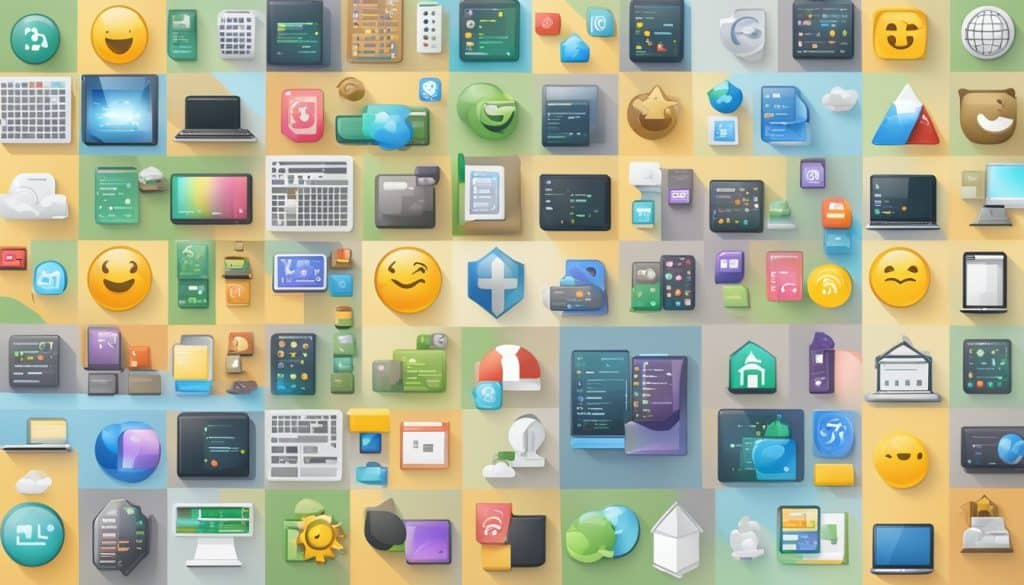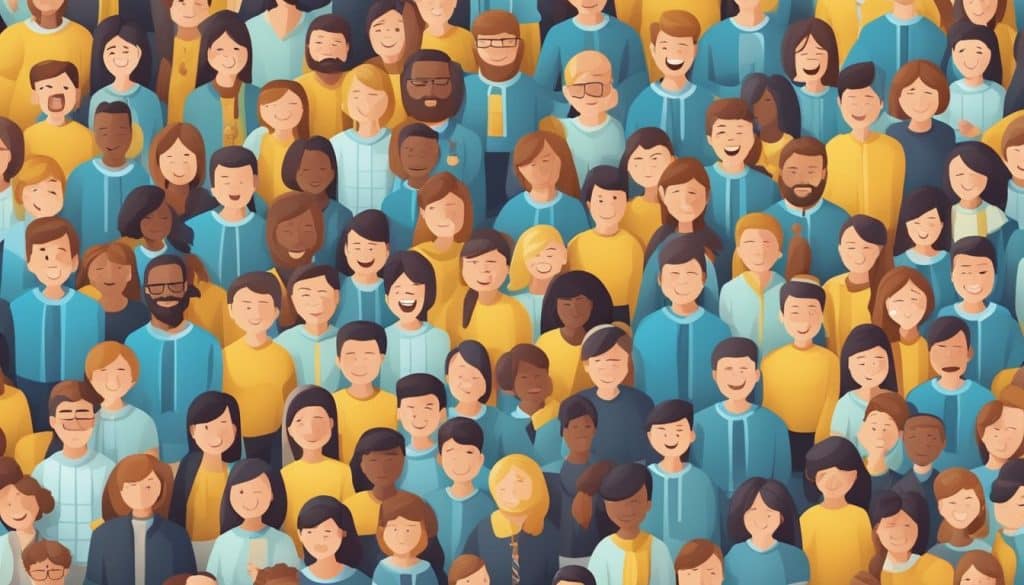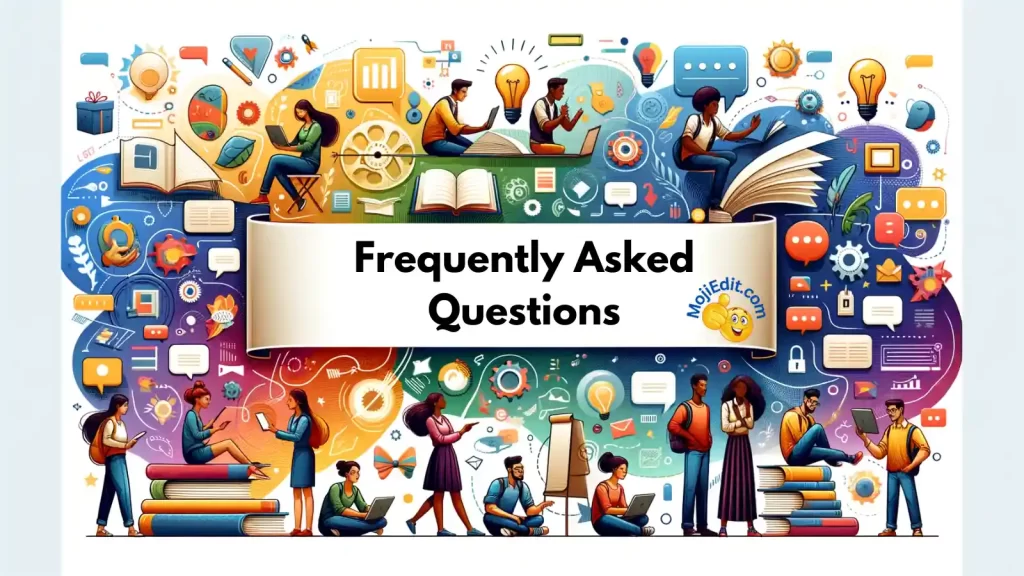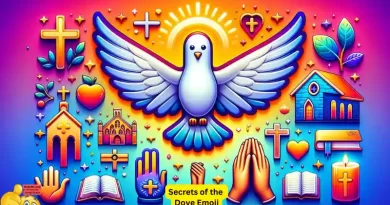Church Emoji: Guide to Meaning and Use
The church emoji is one of the most often use Christian emojis. Its a simple digital icon of a church, is much more than just a cute image to sprinkle in text messages or social media posts. This emoji embodies a range of meanings—from religious devotion and faith to representing cultural ceremonies like weddings or baptisms. It’s recognized across various platforms as a symbol for places of Christian worship and the diverse activities that occur within them.
Its widespread adoption across different operating systems and devices speaks to the universal nature of the emoji language. Users across the world can express their spirituality, signify a place of sanctuary, or just share the architecture of a local church. The church emoji has quietly embedded itself into the digital conversation where it can convey messages that might otherwise require many more words.
Key Takeaways
- The church emoji represents a universal symbol of faith and religion.
- It’s used to express various aspects of religious life and church-related events.
- This emoji’s integration across platforms ensures consistent communication of its intended meaning.
Origins and History
Church Emoji Across Platforms
The Church Emoji displays uniquely across various platforms, each bringing its own style to this digital symbol of worship and community. Apple, Google, Twitter, and Windows all present the emoji with their distinct design touches, reflecting the minor differences in aesthetic representation in the emoji universe.
Apple Design
On Apple devices, the Church Emoji adopts a classic look with a gray facade, traditional stained glass, and a large cross atop the main steeple. Its design conveys a sense of serenity and is consistent with other Apple emoji aesthetics focusing on realism and detail.
Google Design
Google’s version of the Church Emoji takes on a slightly more modern and simplistic approach. The building is usually shown in light stone with a red-roofed tower, which might include a small cross. This Emphasizes clarity. The Google’s design is straightforward and easily recognizable.
Twitter Variation
An interesting take can be found on Twitter. Their Church Emoji variation usually features a simplistic yet charming appearance, often with a heart above the doors. This touch adds an element of warmth and community. It resonates with Twitter’s more conversational and casual vibe.
Windows Representation
Lastly, Windows depicts the Church Emoji with stark, bold outlines and utilizes a more block-like structure. Typically, Windows emojis might seem flatter but maintain a colorful and clear. This is a representation that aligns with the broader design language of their operating system.
Usage and Semantics
In modern digital communication, emojis serve as compact symbols to convey messages, emotions, and even cultural ideas. The church emoji, in particular, demonstrates versatility in various contexts, ranging from expressing religious faith to marking special events within a community.
Religious Context
The church emoji typically represents a building associated with Christian worship and religious practices. Often, people use this emoji to indicate their participation in church-related activities or to discuss topics of faith and spirituality. During religious celebrations like Christmas or Easter, the church emoji becomes even more prevalent, setting a tone for discourse steeped in Christian traditions.
In texting or social media, the ⛪ emoji can serve as a shorthand for conveying one’s location—attending a service—or an activity, like prayer, within religious circles. Besides Christian holidays, the emoji is frequently utilized to mark milestones such as baptisms, weddings, and funerals, all events that customarily take place in a church setting.
Cultural Significance
Beyond strictly religious uses, the church emoji has acquired a broader cultural resonance. The symbol can evoke a sense of community and shared heritage. This is true for those who grew up in areas where the church is a central institution. It also helps communicate respect for religious tradition. It is also an invitation to cultural events often associated with church venues. Examples include concerts or community meetings.
Some may use the church emoji in a more abstract manner, symbolizing sanctuary, peace, or seeking solace—emotions and states of mind tied to the idea of a sacred space. It’s not uncommon to see it appear in narratives or recollections that touch on one’s upbringing or community-centric stories where the church played a pivotal role.
Technical Aspects
When it comes to understanding the church emoji, the technical aspects are central to its integration across different platforms. This section will dive into the details regarding its codepoints, shortcodes, and the coding required for web representation.
Codepoints and Shortcodes
The church emoji is represented by the Unicode codepoint U+26EA and it commonly appears within text and messaging applications via its shortcode, which varies by platform but often takes the form of :church:. For those interested in the development side, the emoji is integrated into systems through these specific identifiers. Shortcodes enable users to add the emoji into their messages swiftly, often providing a visual cue to select the emoji from a menu.
- Name: Church Emoji
- Unicode: U+26EA
- Shortcode:
:church:
HTML and URL Coding
The church emoji can also be represented in HTML and URLs using specific codes that allow it to be displayed on web pages and links. For HTML, the hexadecimal (⛪) and decimal (⛪) codes are used. In terms of URLs, an escape code is required to encode the emoji, which looks like %E2%9B%AA.
- HTML Hex:
⛪ - HTML Dec:
⛪ - URL Escape Code:
%E2%9B%AA
These codes are crucial for web developers and content creators who want the church emoji to appear on websites and in digital communication accurately. Using these technical conventions assures that the church emoji will be universally recognized across various browsers and devices, maintaining the integrity of the message whether it’s in social media posts or email newsletters.
Integration with Programming Languages
Emojis have found their way into the realm of programming, offering developers a quirky and visually expressive way to interact with code. This section explores how the church emoji and its counterparts are integrated within various programming languages, tapping into the potential for more engaging and modernized code documentation and interfaces.
HTML/CSS
In HTML, emojis can be easily included as text using their Unicode representation. For instance, to add a church emoji, developers would utilize the Unicode ⛪ in their HTML code. Styling these emojis with CSS is straightforward as well; they can be resized, colored, and even animated, just like any other text characters. Implementing an emoji often requires setting the font-family to ensure consistent rendering across different browsers.
JavaScript
JavaScript provides dynamic capabilities when working with emojis. Through various libraries, developers can manipulate emojis, including the church emoji, within the Document Object Model (DOM). They can also handle emoji input from users and integrate them into web applications. Additionally, JSON—the data interchange format closely associated with JavaScript—supports emojis, thereby allowing them to be used within data transmitted over the internet.
Server-Side Languages
Server-side programming languages such as Java, C++, Python, PHP, Ruby, and Perl have differing approaches to emoji integration. In Python, for example, working with emojis might involve importing a library like emoji to encode and decode emoji characters in strings. PHP supports emojis natively, given its UTF-8 compatibility, making it possible to store and render emojis in databases and apps. Ruby and Perl also handle string encoding that supports emojis, provided the right environment setup. Each language has its specific ways to process and display emojis effectively in various applications.
Church Emoji in Social Contexts
As emojis become extensions of our digital lexicon, the church emoji has found its niche in social networking and online celebration.
Social Media Communication
On platforms like Facebook and Instagram, the church emoji serves as more than just a digital icon; it acts as a versatile tool for expression. Users often integrate the church emoji into posts and messages to represent places of worship during religious occasions. For instance, during Christmas, it’s common to see the church emoji sprinkled throughout timelines, symbolizing the holiday’s religious significance.
Moreover, on social media, communication often revolves around life events, and the church emoji plays a part in this. Couples might use it to announce their upcoming weddings or to reflect on the ceremony post-celebration. It’s a symbol that transcends mere text, allowing for a shared understanding of its significance in life’s milestones.
Digital Celebrations
The virtual world buzzes with activity as religious holidays approach, and the church emoji 🛐 shines brightly in these digital celebrations. It punctuates messages and statuses, acting as shorthand for festive occasions. Teenagers leveraging the succinct power of emojis can quickly convey their participation in religious events without typing extensive details.
Specifically, during religious holidays like Christmas 🎄, the church emoji is omnipresent across various social networks. It’s a way for teens to recognize the day’s import without losing the informal tone so prevalent in digital communication. They might center it in a post about attending midnight mass or use it alongside other festive emojis to celebrate the holiday’s spirit from a distance.
Visual Interpretation
Before diving into the specifics, it’s essential to understand that the church emoji represents more than a simple image; it encapsulates elements of architecture and meaningful symbols from the Christian faith. Now, let’s explore the design references and symbolic features deeply represented in the emoji.
Architecture Reference
The church emoji uniformly displays a building typically showcasing features of traditional church architecture. It includes a rectangular construction with a steeple sitting prominently on the roof, often centered above the main entrance. This visual structure matches the style of many Western Christian churches. Moreover, the steeple, one of the most recognizable characteristics, points skyward, which historically meant directing the viewer’s mind towards the heavens. Additionally, the church depicted usually has a cross at the top of the steeple or facade, clearly indicating its Christian affiliations.
Iconographic Elements
Moving to iconographic elements, it’s clear that the emoji captures more than just the physical form of the church. For instance, the cross present in the emoji is a poignant symbol of the Christian faith, representing sacrifice and redemption. Additionally, some versions of the emoji include stained glass windows, incorporating an artistic touch that reflects the embellishments often found in church buildings. These windows not only serve as decorative elements but also as storytelling mediums, illuminating biblical scenes or saints in vibrant colors. The combination of these elements in the emoji’s image conveys a character of reverence and spirituality.
Cultural Impact and Reception
The church emoji has seen diverse applications across different facets of society where it resonates with a broad audience for its religious and secular significance.
Religion and Worship
In religious contexts, the church emoji signifies places of worship and is a digital extension of faith. It often accompanies messages about worship services, prayer gatherings, and religious community events. For example, a user might include the church emoji when sharing a post about attending a Sunday service or when inviting others to join a prayer group online. It’s symbolic of an individual’s connection to their faith and the presence of love and community within religious practices.
Secular Usage
Beyond the sacred walls, the church emoji takes on varied secular meanings. People find it in conversations about historical buildings, use it metaphorically in expressions of music that resonate with the soul, and even discuss it in terms of community get-togethers that are not necessarily religious. Users have adopted the emoji to convey a sense of assembly and unity, exemplifying how symbols can evolve beyond their origins to gain broader impact and reception in everyday communication.
Frequently Asked Questions
Use 💒 for church events, services, or invitations. Perfect for wedding or baptism announcements too.
It shows spirituality, faith, or support during tough times 🏠. Also used to offer condolences or celebrate religious milestones.
Teens use it to share their church-related activities. It’s a cool way to express faith or community involvement without too many words.
No. ⛪ is mainly for Christian worship. Other uses are creative. Users adapt it for general spiritual contexts.
🛐 + ⛪ = Strong faith or a prayer call. It intensifies the message’s religious sentiment.
Yes. Designs vary by platform 🍎. But, its meaning stays the same. Each platform’s version reflects its unique style.
Not standard. But combining 💒 + ❤️ shows love for church community. It symbolizes affection towards religious places or gatherings.

